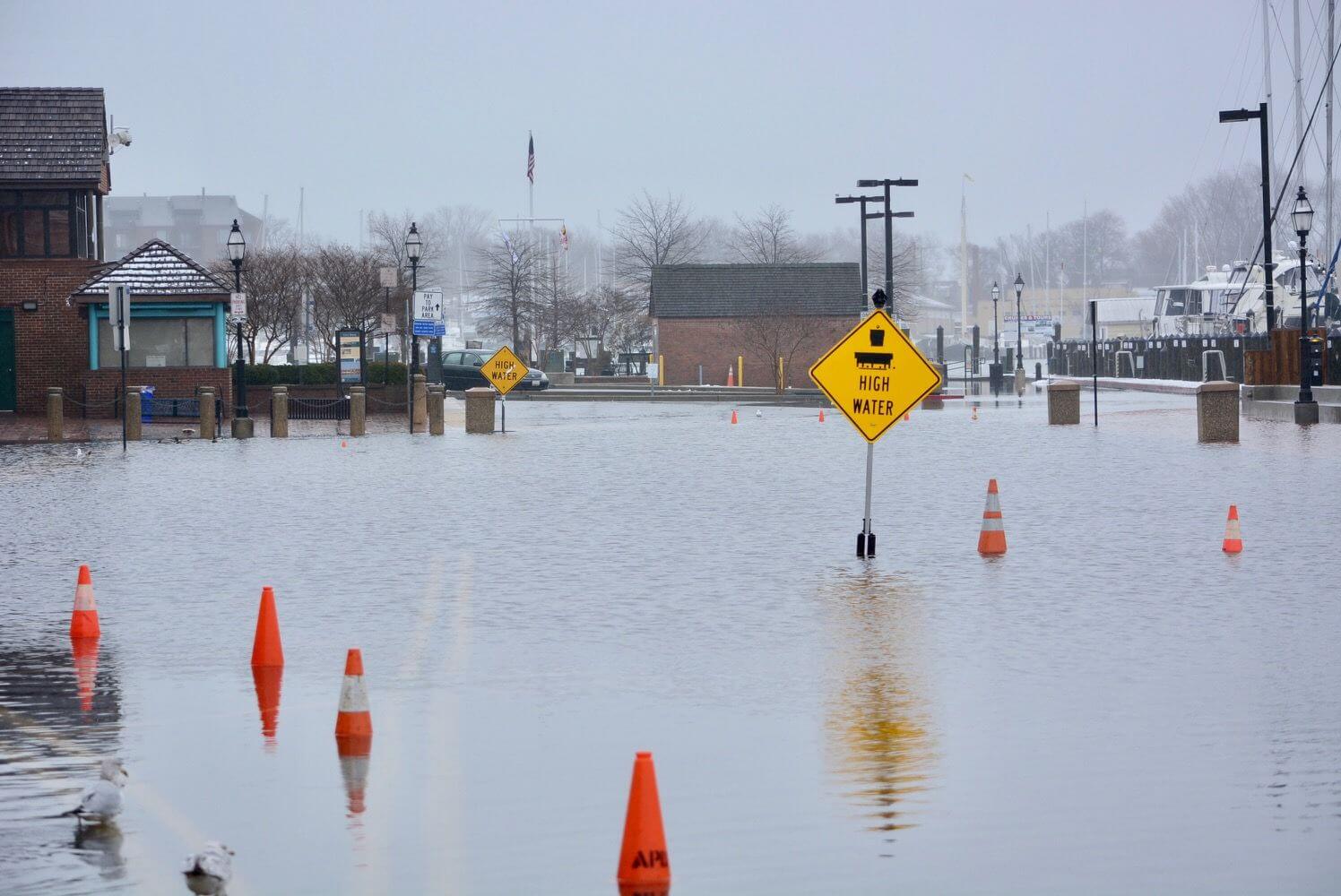Analysis: State’s climate plan is comprehensive but lacks short-term legislative strategy

By most accounts, the plan the Maryland Department of the Environment outlining the policy actions required to dramatically reduce the state’s greenhouse gas emissions is innovative and ambitious.
But the 98-page document, released during the quiet days between Christmas and New Year’s, lacks a cohesive short-term legislative strategy for how Maryland can meet its climate and clean energy goals. More importantly, it does not lay out concretely how the state can begin generating about $1 billion a year needed to implement the plan. That’s leaving lawmakers and environmental advocates scrambling to develop a battle plan less than a week before the 90-day General Assembly session.
“There are some parts of the plan that are strong and some parts of the plan that are less developed,” said Josh Tulkin, executive director of the Sierra Club’s Maryland chapter. “The question is, what now?”
The plan was released, on schedule, before the end of 2023, meeting a mandate in the Climate Solutions Now Act of 2022 — the comprehensive legislation that set the state’s aggressive goals of cutting greenhouse gas emissions 60% from 2006 levels by 2031, achieving 100% clean energy by 2035, and reaching net zero emissions by 2045.
“This plan provides the blueprint we need to reach our climate goals,” Serena McIlwain, secretary of the Maryland Department of the Environment (MDE), said in a statement. “We know that ending climate pollution will not be easy. We are committed to implementing this plan with the help of citizens, elected officials, nonprofit organizations, and businesses, because we are all in this together. Maryland will lead the transition to the green economy and leave no one behind.”
The report comes as McIlwain and Gov. Wes Moore (D) vow to make Maryland a leader in innovative state-based climate policy. Yet it still isn’t clear how much energy and political capital the governor plans to invest in advancing the plan during the busy and uncertain legislative session.
In the broadest possible terms, the MDE document lays out an array of promises and priorities for combating the climate crisis, which will impact practically every sector of the economy.
“It gives us the road map we need, it gives us the skeleton we need to build on to get through the next few years,” said Del. Lorig Charkoudian (D-Montgomery), one of the climate policy leaders in the General Assembly.
The plan includes recommendations for:
- How to complete the transition away from coal-fired power plants;
- Scaling renewable energy infrastructure, especially solar, wind and battery power;
- Providing more incentives for consumers to choose electric vehicles when they are ready to replace their cars and expanding EV charging infrastructure;
- How to make energy retrofits on 9,000 existing buildings and ways to help consumers electrify their homes by switching to heat pumps, electric water heaters and electric appliances;
- Electrifying school buses, transit buses and government fleet vehicles.
The plan also lays out specific areas where carbon reductions are possible, including establishing an innovative zero-emission heating equipment standard, a 20% reduction in vehicle miles traveled, and eliminating trash incineration credits from Maryland’s Renewable Portfolio Standard, which provides state incentives for renewable energy generation.
MDE estimates that at least $1 billion annually in new state spending is necessary for investments that would help the state meet its climate mandates. These would include:
- Home energy efficiency and electrification incentives from the Maryland Energy Administration, expanding point-of-sale rebates for consumers and contractor incentives;
- Scaling up green-building incentives for commercial, multifamily and institutional construction and low-interest loans for projects in large buildings;
- Point-of-sale state rebates for consumers who purchase electric vehicles and EV charging equipment;
- Grant and loan programs for several emissions reduction and carbon sequestration programs;
- Expansion of state apprenticeship and workforce development programs for electricians, heat pump installers, and other clean energy jobs;
- Aggressive promotional campaign to inform Marylanders of rebates and tax credits available to them for clean energy transition;
- More funding for technical support for building owners on decarbonization projects.
To meet the additional expense of funding these initiatives, the plan sketches out potential sources of revenue, including a possible “cap-and-invest” carbon pricing program that seeks to limit greenhouse gas emissions, taxes polluters and makes fossil fuel companies pay for previous environmental damage. MDE also envisions expanding the Regional Greenhouse Gas Initiative (RGGI), which allows Maryland and Northeastern states to collect funds from power plants that are powered by fossil fuels and use the revenue for clean energy programs.
The plan also proposed that Maryland can charge companies a fee for transporting hazardous substances through the state and that owners of cars and trucks powered by fossil fuels should pay an extra fee when registering their vehicles.
The report suggests that the state’s three green banks can play a role in providing and leveraging funding to help expand clean energy and says the state could issue green revenue bonds. It also lists a long menu of federal grants that state agencies can seek for climate and clean energy programs. Every state gets some portion of this federal funding, but additional funds are freed up for the states that develop the most innovative proposals.
“If we are doing model, cutting-edge stuff in Maryland, we’ll get more competitive federal funding,” Charkoudian said.
That amps up the pressure on state officials to develop creative programs — and funding streams — quickly.
But the MDE plan stops short of recommending a short-term strategy for beginning to fund climate initiatives — at the time when state government is facing fiscal shortfalls.
“It seems like a pretty good plan — the question is, where do we get the money for the plan?” said Del. David Fraser-Hidalgo (D-Montgomery), another environmental stalwart in the legislature.
While joining other environmental groups in praising the overall scope and ambitions of the MDE plan, the Maryland League of Conservation Voters, an early supporter of Moore’s in the 2022 election, expressed disappointment that it lacked adequate funding strategies.
“Without designated funding, or even a commitment to finding funds, there is no guarantee the policies will be implemented and the plan is simply — a plan,” the green group said in a written analysis.
The plan does provide some details on executive actions that state agencies can take in the short term. For example, it suggests that MDE can, over the next year, adopt a zero-emission heating equipment standard; adopt a clean heating standard; strengthen the RGGI program; evaluate a cap-and-invest program; and work to finalize vehicle emissions standards.
The Maryland Energy Administration, the report suggests, can determine this year whether the state can adopt a clean power standard under existing law and can study whether additional state action is needed to accelerate solar power deployment. The agency can also begin to expand its capacity to provide technical support on building decarbonization projects and electric vehicle expansion.
The Maryland Department of Transportation, according to the report, can begin to implement expansive EV programs this year and should begin finalizing and implementing a long-term transportation plan — even as state transportation officials warn that major cuts to key projects may be necessary in the short term.
The plan suggests that the Maryland Public Service Commission — which just released a study in late December showing that the region’s electric grid is capable of handling a major transition to building and vehicle electrification — should initiate a proceeding this year to require natural gas utilities to develop plans to transition to net-zero emissions.
And it lays out ways the Maryland Department of Labor and the state’s new service year program can begin to build a bigger clean energy workforce in the state this year, including the possible establishment of a climate corps.
Legislative actions
But when it comes to a legislative strategy, while the MDE report recommends half a dozen bills to help the state reach its climate goals, it doesn’t necessarily say that the Moore administration plans to take the lead on these during the upcoming legislative session. Instead, the plan says, “Fully implementing this plan will require action by the Maryland General Assembly. Maryland is fortunate to have policy experts in the legislature who are skilled at developing targeted legislation to address the complexity of the clean energy transition.”
The Moore administration’s plan envisions legislative action on half a dozen fronts, including funding initiatives; modifying the state’s renewable portfolio standards; requiring new multifamily buildings to be “EV-ready;” updating the state’s EmPOWER program, which currently promotes energy savings in buildings; developing new rules to regulate carbon emissions in manufacturing; and strengthening the state’s EV purchasing incentives.
Yet the Moore administration has thus far not said whether it plans to take the lead on any of these proposed legislative measures — either as part of the governor’s 2024 legislative package or in the form of bills advanced by MDE. And with the first major new standards laid out in the Climate Solutions Act just seven years off, it’s unclear how much urgency the administration attaches to implementing MDE’s comprehensive proposals.
So several lawmakers are developing — or reintroducing — climate legislation of their own.
Fraser-Hidalgo and Sen. Katie Fry-Hester (D-Howard) are introducing a measure called the Responding to Emergency Needs from Extreme Weather Act, or the RENEW Act, which would empower the state to seek reparations from fossil fuel companies for prior environmental degradation in the state. By Fraser-Hidalgo’s estimate, such efforts, which would inevitably end up in the courts, could yield $9 billion for the state — and almost single-handedly pay for all the climate initiatives.
“The sooner you go ahead and get the process going, the sooner you get your money,” he said.
Environmental advocates are staging a rally in support of the legislation in front of the State House on Wednesday afternoon, the first day of the session.
Environmentalists are also gearing up to support a bill by Hester and House Economic Matters Committee Chair C.T. Wilson (D-Charles) that would set statewide standards for siting solar installations. They’re also backing a bill by Sen. Karen Lewis Young (D-Frederick) and Del. Vaughn Stewart (D-Montgomery) to remove trash-to-energy facilities from eligibility for clean energy subsidies.
Other climate bills on the docket include a bill from Sen. Benjamin Brooks (D-Baltimore County) and Del. Adrian Boafo (D-Prince George’s) to require that all new buildings have electric heat and cooling systems; a bill from Charkoudian setting up a pilot program for geothermal energy in the state; a bill by Fraser-Hidalgo and Senate Education, Energy and the Environment Chair Brian J. Feldman (D-Montgomery) urging the Public Service Commission to work with utilities to set different rates for off-peak and peak electricity use; a bill developed by Del. Regina T. Boyce (D-Baltimore City) and Sen. Michael Jackson (D-Prince George’s) to require that environmental justice considerations be part of most permitting decisions; and a bill by Sen. Sarah K. Elfreth (D-Anne Arundel) and Del. Sara Love (D-Montgomery) to establish a watershed restoration pilot program.
There will, no doubt, be others that environmental groups decide to fight for.
“I think it’s going to be a bumper crop year for climate legislation,” said Jamie DeMarco, Maryland director for the Chesapeake Climate Action Network. “We basically need every year to be a bumper crop year between now and 2031.”
Editor’s note: This story was updated to better describe the proposed RENEW Act.




 Creative Commons Attribution
Creative Commons Attribution